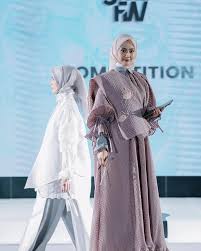
The Traditional Hijab Styles are not merely articles of clothing but profound symbols of cultural identity and heritage. They embody a rich tapestry of history, representing an intersection of tradition and modernity. This comprehensive guide delves into the elegant hijab styles that reflect traditional aesthetics while offering practical insights into their contemporary relevance.
Understanding Traditional Hijab Styles
Traditional Hijab Styles are deeply rooted in the cultural and historical contexts from which they originate. These styles have evolved over centuries, integrating various elements of regional dress codes, religious practices, and personal preferences. The traditional hijab is not only a garment but a testament to the diverse ways in which modesty and style are expressed.
Historical Background
The history of the hijab can be traced back to ancient civilizations where modesty was symbolized through clothing. In Islamic tradition, the hijab signifies modesty, piety, and respect. Historically, hijabs were adorned with intricate embroidery and luxurious fabrics, reflecting the wealth and status of their wearers. As societies evolved, so did the styles, with each era contributing its unique flair to this timeless garment.
Key Traditional Styles
- Khimar: A type of cape that covers the shoulders and chest, often worn over other garments. It is a versatile piece that can be styled in numerous ways, making it a staple in traditional hijab fashion.
- Shayla: A long, rectangular scarf draped over the shoulders and chest. It is commonly worn in the Middle East and is favored for its simplicity and elegance. The shayla can be styled to create a variety of looks, from casual to formal.
- Al-Amira: This style consists of a fitted cap worn under a scarf or shawl. It offers a practical solution for keeping the hijab in place while allowing for various styling options.
- Hijab with Embroidery: Traditional hijabs often feature intricate embroidery that adds a touch of sophistication. These embroidered hijabs are typically reserved for special occasions and are known for their detailed craftsmanship.
- Jilbab: A loose-fitting outer garment that covers the entire body except for the face, hands, and feet. The jilbab is a traditional piece that combines modesty with a sense of elegance.
Contemporary Adaptations of Traditional Hijab Styles
While traditional hijab styles remain deeply cherished, contemporary fashion has introduced innovative adaptations that blend tradition with modernity. These adaptations allow for greater flexibility and personalization, catering to the diverse preferences of today’s fashion-conscious individuals.
Modern Fabric Choices
Modern fabrics have transformed the way traditional hijabs are styled. Lightweight materials such as chiffon and georgette offer comfort and ease, while luxurious fabrics like silk and satin add a touch of opulence. The choice of fabric plays a crucial role in defining the overall look and feel of the hijab.
Styling Techniques
Contemporary styling techniques have brought new dimensions to traditional hijab fashion. Layering, draping, and accessorizing have become popular methods for adding flair to traditional styles. For instance, pairing a classic khimar with a modern belt or accessorizing a shayla with a statement brooch can create a unique and sophisticated look.
Fusion of Cultures
The fusion of various cultural influences has enriched traditional hijab styles. Incorporating elements from different fashion traditions can result in innovative and elegant looks. For example, blending traditional embroidery with contemporary patterns can create a striking visual effect that pays homage to both heritage and modernity.
Tips for Choosing the Right Traditional Hijab Style
Selecting the right Traditional Hijab Styles involves considering various factors, including personal preferences, cultural significance, and the occasion. Here are some tips to guide you in making an informed choice:
- Understand Your Personal Style: Identify which traditional styles resonate with your personal fashion sense. Whether you prefer the classic elegance of a khimar or the simplicity of a shayla, choose a style that reflects your individuality.
- Consider the Occasion: Different occasions may call for different hijab styles. For formal events, opt for hijabs with intricate embroidery or luxurious fabrics. For everyday wear, choose comfortable and practical styles that suit your daily routine.
- Evaluate Fabric and Comfort: The fabric of the hijab plays a significant role in determining comfort and overall appearance. Choose fabrics that feel good against your skin and complement the traditional style you prefer.
- Experiment with Accessories: Adding accessories such as pins, belts, or brooches can enhance the traditional look of your hijab. Experiment with different accessories to create a personalized and elegant style.
- Respect Cultural Significance: While adapting traditional styles to modern fashion, it is essential to respect the cultural significance of the hijab. Ensure that your choices honor the traditions and values associated with these styles.
Conclusion
Embracing traditional hijab styles is a celebration of cultural heritage and personal expression. By understanding the historical context, exploring contemporary adaptations, and making informed choices, you can appreciate the elegance and significance of Traditional Hijab Styles. As you navigate the diverse world of hijab fashion, remember to honor tradition while embracing modernity, creating a look that is both timeless and uniquely yours.
For more inspiration and options, visit onlineqstore.com to discover a wide range of hijabs that blend traditional elegance with contemporary fashion.







